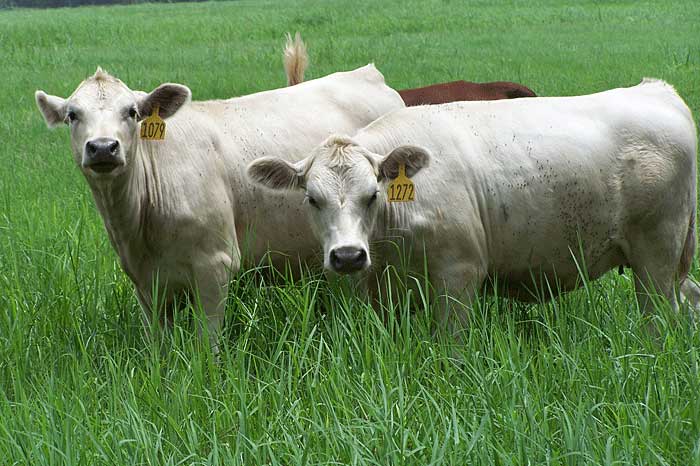THE PLANNNED SALE of a herd of Ona White Angus cattle, a new and Central Florida-hardy breed of cattle, has been canceled.
The sale had been scheduled for January 21 at the University of Florida Institute of Agricultural Sciences’ Range Cattle Research and Education Center (RCREC) in Ona, a small community in Hardee County.
“We have made the decision to cancel the Ona White Angus herd sale scheduled for January 21, 2016,” professor and RCREC Director John Arthington said for a UF/IFAS news release. “Although we have had a great deal of interest in the cattle, the majority of the prospects are from outside the U.S. In addition, potential partnerships have emerged which could increase the likelihood of expanding access of these (cattle) genetics to more people in a shorter amount of time.
“For these reasons, further dialogue and planning regarding the disposition of the herd is needed,” Arthington said. “The herd continues to be offered for sale, and new information will be provided as it becomes available. Please continue to watch for email updates and additions to our website (at rcrec-ona.ifas.ufl.edu).”
Identified as a mixture of breeds dominated by Black Angus but sporting a white coat over dark skin, the Ona White Angus has proven to have the tough stuff needed to thrive in Central Florida.
UF developed the breed, but it was mostly by mistake, Arthington said for a mid-2015 story in Central Florida Ag News.
“The herd originated from a long-term beef cattle breeding project led by F.M. Peacock, a professor of genetics at the University of Florida. That study focused on productivity traits of purebreds and crossbreds from three breeds: Black Angus, Charolais, and Brahman,” Arthington explained. Then, subsequent studies introduced genetics from additional breeds like Simmental and Black Brangus (a mixture of Zebu-derived Brahman and Angus).
Soon, UF researchers noted some unique traits.
“In 2002, we began to recognize a small but significant number of white calves in the herd,” Arthington recalled. “We began isolating these heifer calves and breeding them to Black Angus bulls. Over the following 12 years, we were able to identify and increase the number of individual cows that were responsible for passing this white color trait onto their offspring. From these cows, we formed the foundation herd for the creation of the Ona White Angus.”
The herd currently consists of about 90 animals, from yearlings to pregnant cows and bulls. They look like “essentially Angus cattle with white hair,” described Bridget Carlisle-Stice, a UF Livestock Extension agent in Polk County. “At first they seemed to be kind of a novelty,” Carlisle-Stice said, “but over the years, it has become evident that there may be something to them.”
Along with the reproductive and meat quality advantages of the Angus, coupled with the adaptability and longevity of the Zebu, UF researchers also note that the breed seems to handle the tropical heat of Central Florida remarkably well. Under further testing, the Ona White Angus showed definite advantages in warm climates.
“Our research implies that the white phenotype, combined with a predominantly black Angus genotype, provides significant advantages to beef cattle production in warm climates,” Arthington said. He cited a 2008 study where Ona White Angus heifers exhibited a sweating rate 83 percent greater than that of a group of Black Angus heifers bred in Florida for many generations. Another study showed Ona White Angus to have lower temperatures than Black Angus in fields lacking shade.
Arthington asserted that the Ona White Angus have a greater capacity for maintaining cooler body temperatures in Florida’s heat, powerful sun, and high humidity.
Carlisle-Stice agreed, noting, “You can often drive by the research center and see them in the pasture. While their black counterparts are laid up in the shade in the heat of the day, the White Angus are grazing.”
CREDIT
original article by ERIKA ALDRICH
Posted January 11, 2016

